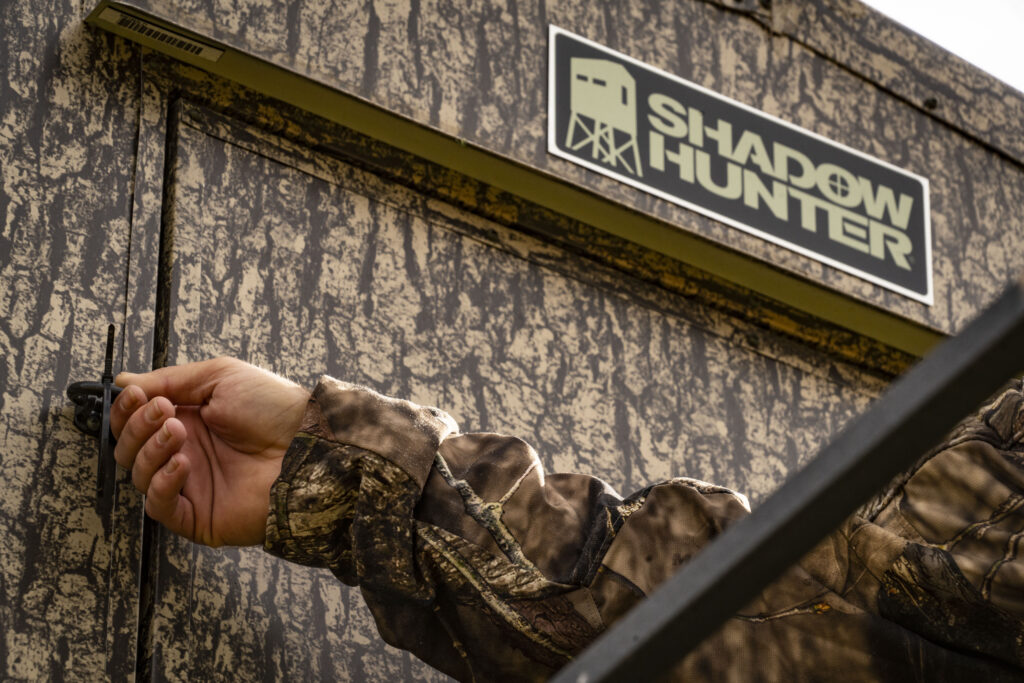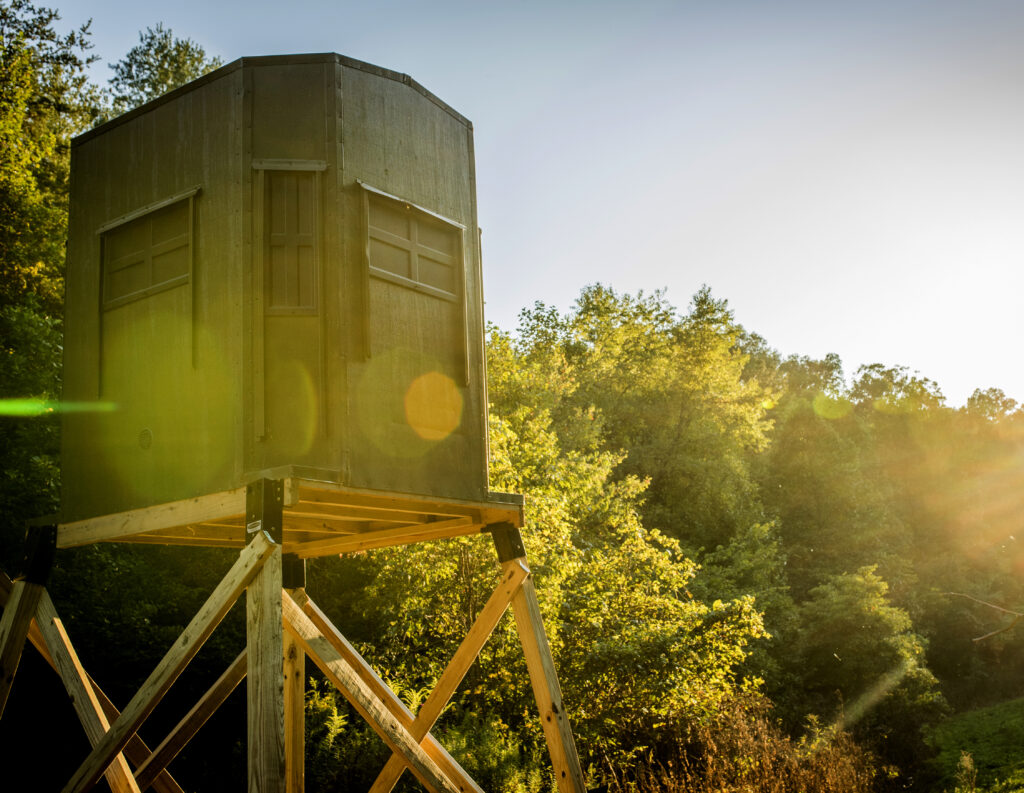Hunting from elevated enclosed blinds is taking the deer hunting world by storm. Hard-shell hunting blinds offer a long list of benefits and few disadvantages. These are great for hunting during bad weather. Not to mention the scent-retention benefits. Or the ability to keep new hunters comfortable while in the field. Obviously, the net gain from hunting from an elevated hunting blind is large, and because these are selling like hotcakes, there is no shortage of market options.
Hard-shell hunting blinds are full of benefits. The most important of which include retaining scent inside the blind, shielding from the elements, and more. Of course, these are only as good as the hunters who use them. Here are 10 tips for hunting from hard-shell hunting blinds.
1. Match blind features to your style of hunting.

Most hard-shell hunting blinds offer similar features. But there are subtle differences nuanced to specific needs and hunting styles. Select the right hard-side hunting blind based on your personal hunting style.
2. Continue to focus on wind direction.
Even though a hard-shell hunting blind helps retain unwanted scent from escaping into the surrounding area, it’s still important to focus on wind direction. On the safe side, it’s good to place these blinds in scent-safe areas to minimize the risk of deer smelling you. However, because most hard-shell blinds are scent-proof (with windows closed), it gives you the ability to place blinds in positions to intercept bucks based on wind directions that encourage them to move during daylight, even if the wind isn’t ideal for a treestand or hub-style ground blind.
3. Remember sun position.

Being able to see is an obvious priority. Don’t forget about sun positioning when placing the blind. If the sun is right in your eyes at dawn or dusk, that’ll make it hard to see or shoot deer. Position blinds wisely.
4. Place it in a proven spot.
Hard-shell hunting blinds aren’t cheap. They cost thousands of dollars, and it’s crucial to get the most out of the investment. Do that by placing your blind in the best proven spot.
5. Use it where the wind swirls.
One of the best places for a hard-shell hunting blind is in that spot you’d love to hunt but never can because the wind swirls so much. That makes a hard-side blind that’s scent-proof ideal, and gives it even more purpose.
6. Put it on wheels.

Rarely do I shoot bucks out of the exact same spots. Because I tend to target the biggest buck I have access to, this requires hunting different properties, or at least, different areas of the same property. Because of this, it’s beneficial to put the hard-sided blind on a utility trailer for easier maneuvering.
7. Add some cover around it.
Brushing in a blind is important. That’s especially true when hunting a buck with a personality that’s less tolerable to human intrusion, even if it is just a hard-shell hunting blind. Therefore, adding extensive cover is good. At least, provide head-level cover up to and around the blind so you can climb into and out of it without deer in the distance seeing your profile.
8. Or add no cover at all.

In contrast, if you don’t make the blind virtually disappear, don’t brush it in at all. Deer should either not know it’s there, or be able to spot it from a distance. For whatever reason, deer don’t mind the ends of the spectrum, but the middle freaks them out.
9. Give deer time to adjust.
Once the blind is set, it might take a little time for deer to accept it. Don’t expect to hunt from this blind the day it is set up. Instead, deploy it as early as possible before the season.
10. Invest in a great chair.
Don’t buy a great blind and use a subpar chair. Get a good chair to go with your important hard-shell hunting blind purchase. You’ll be glad you did.


